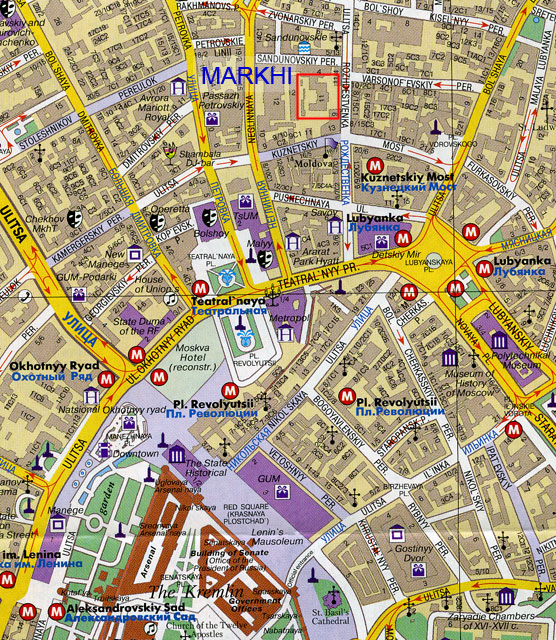EAEA 2007
MAIN INFORMATION ![]()
8th Conference of European Architectural Endoscopy Association
Moscow, 20 - 22 September 2007
SUPPORTED BY THE RUSSIAN ACADEMY OF THE ARCHITECTURE AND BUILDING SCIENCES
Chair: Vice chancellor of MARCHI , Prof., Dr. Arch., academician of RAABS&IAA, Honoured architect of Russia Ilia G. Lezhava
KEY-NOTE SPEAKER:
CHIEF SCIENTIFIC SECRETARY, corresponding member of the RUSSIAN ACADEMIE of the ARCHITECTURE and BUILDING SCIENCES (RAABS), Honoured architect of Russia, Prof., Dr. Arch. Georgy V. Esaulov
Moscow Institute of Architecture (State academy)
Rozhdestvenka str., 11, GSP, Moscow, Russia, 107031
Tel/fax: +7 495 621-12-40, e-mail: [email protected]
Theme:
"Virtual Environment and Experience: Shared-IN-sight"
Conference target
The significance and the specific feature of the 8-th regular conference of EAEA in Moscow is that this meeting is practically the first experience in the concerted cooperation of “West” and “East” in the sphere of EAEA activity. The conference in Moscow Architectural Institute, while welcoming the participation of foreign universities, provides the wide opportunities for universities from Russia and former Soviet Union (FSU or CIS) countries to take part in it.
The openness to all kinds of conventional and perspective (future) technologies favorably differs the EAEA from the analogous association, since the “endoscopy” is not an attachment to a certain technical tool, for instance endoscope or computer, but a method, depending only on real space and on the most authentic actual models of it. This method determines the possible means of investigation of designed objects.
The advantage of EAEA also consists in that in the frame of our conferences and not only there the problems are considered which concern firstly the methods of perception and research of objects but not the tools, even the most perfect of them as computer is. The important feature of the EAEA approach is the balance between physical and digital models. We consider that while the material world exists there should be the material means for its simulations and representation.
The following themes were discussed on the EAEA conferences in the last period:
1993: Endoscopy as a Tool in Architecture (Tampere, Finland)
1995: The Future of Endoscopy (Wien, Austria)
1997: Architectural and Urban Simulation Techniques in Research and Education (Delft, The Netherlands)
1999: Simulation of Architectural Space - Color and Light, Methods and Effects (Dresden, Germany)
2001: Environmental Simulation - New Impulses in Planning Processes (Essen, Germany)
2003: Spatial Simulation and Evaluation - New Tools in Architectural and Urban Design (Bratislava, Slovak Republic)
2005: Motion - e-motion and Urban Space (Dortmund, Germany)
The range of issues concerning the "Virtual Environment and Experience: Shared-IN-sight", which is offered for discussion in 2007 is logically bound up with the agenda of all preceding EAEA conferences. The conference topic tackles two actual aspects of the architectural environment perception: the first is the “computer” medium (animation, rendering and “virtual reality”), the second is the experience of knowledge and the presence in real scenery (physical model and endoscopic device). The architecture and its perception are indivisible, that is why the question of how we actually see the forms and the space is always in focus of designers’ attention.
The necessary stage of design process is the representation of architectural form on paper or by physical model. But there is always a question arises about the truthfulness of such representation in the reflection of reality and the conformity to the designer idea (conception).
With the progress in “virtual” (digital) representation technologies the problem becomes even more vital. Whether “virtual reality” replaces the traditional resources of representation and what the advantages are for a traditional architectural endoscopy comparing to the digital technologies and vice versa are the issues of permanent discussions.
As soon as both of these concepts possess certain advantages and disadvantages, the EAEA conference gives an opportunity for a forum, where the broad and comprehensive discussion on the posed topic could lead to the well-founded, interesting, useful and, may be, unexpected results adequate to nowadays situation.
In connection with the theme of the conference we offer to consider the following approximate directions (as development of conference EAEA 1993 in Tampere):
I. Endoscopy laboratories operating in Europe and non-Europe – modern “Architectural media laboratories”?
II. Modern theories and praxis of architectural design spaces perception and analyses (methods and applications)
III. Future of architectural endoscopy as a method of architectural design space analyses
Key words
Spatial imagination; imagination pedagogy; imaging communication; tools and technologies of imagination in architecture; media interactivity; analogue and digital model composition; animation; rendering; “virtual reality”; physical model; endoscopic device; psychology of spatial perception; methods and techniques of spatial simulation; architectural endoscopy
Deadlines
♦ 29 January 2007 Submission of Inquiry cards
♦ 19 February 2007 Submission of abstracts
♦ 16 April 2007 Abstracts acceptance
♦ 28 May 2007 Preliminary conference program
♦ 30 June 2007 Submission of papers
Conference Committees
Scientific Committee:
Prof. Dr. Bob Martens (Austria)
Prof. Dr. Eng. J.Alexander Schmidt (Germany)
Prof. Jack Breen (The Netherlands)
Prof. Martin C. Stellingwerff (The Netherlands)
Prof. Dr. Eng. Mikhail Matalasov (Russia)
Prof. Dr. Eng. Ryuzo Ohno (Japan)
Assoc. Prof. Eng. Arch. Peter Kardoš (Slovakia)
Organizing & Coordination Committee:
Vice chancellor, Prof., Dr. Arch.,
academician of RAABS&IAA,
Honoured architect of Russia Ilia G. Lezhava Chairman [email protected]
Prof. Dr. Eng. Michael E. Matalasov Vice chairman, preparatory management [email protected], ([email protected])
Prof. Dr. Arch. Michell V. Shubenkov Program conception and facilitation [email protected]
Director of IT centre VICOMP Vladimir F. Pashkov Technology and web-side service, media support [email protected]
Contacts
1. Prof. M. Matalasov, e-mail: [email protected] ([email protected])
2. Department of international relationships, e-mail: [email protected] ,
Tel/fax: +7 495 621-12-40
Moscow Institute of Architecture (State academy)
Rozhdestvenka str., 11, GSP, Moscow, Russia, 107031
Please fill out and mail the Inquiry Card before 29 January2007 by post or
e-mail to ensure and support the work of the Organizing & Coordination Committees
Location of Moscow Institute of Architecture (MIARCH)- MARKHI in russian transcription
















